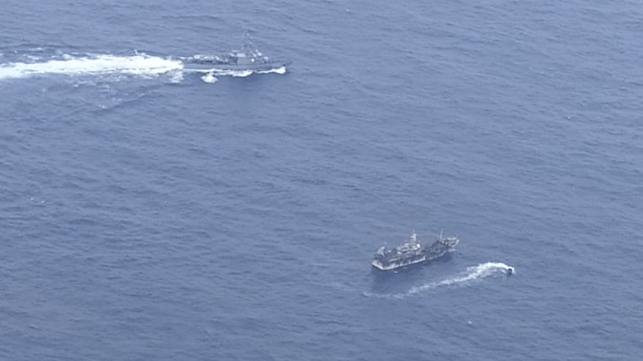New Stanford Study Provides Targeting Guide for IUU Fishing Vessels

IUU (Illegal, Unregulated and Unreported) fishing is a challenging problem for the maritime sector. Its implications for the health of marine ecosystems and for human rights have catalyzed calls for a speedy solution, and it is a focus of several recent corporate and government policy commitments. Unfortunately, the ability of these actors to intervene is compromised by a shortage of information that could be used to target labor abuse and IUU fishing risk.
Previous research has helped to underscore the broad relationship between labor abuse at sea and IUU fishing, but the scales and extent are not well understood. This was the focus of a Stanford University-led study released on Tuesday. Essentially, the study identifies the regions and ports at highest risk for labor abuse and illegal fishing.
Two main underlying risk factors emerged: A vessel’s flag state and the type of gear it carries onboard could be pointers to its illegal activities at sea. “We found fishing vessel flag to have the greatest impact on predicting port risk for both labor abuse and IUU fishing, followed by vessel gear type for labor abuse, and the interaction between flag and gear type for IUU fishing,” the authors concluded.
“Surveillance on the high seas is innately challenging, so these data provide a critical first step in helping stakeholders understand where to look deeper,” said lead author Elizabeth Selig, deputy director of the Stanford Center for Ocean Solutions.
By combining results of expert surveys with “big data” on 8.7 million fishing trips and 5,800 transshipment events, the authors were able to model IUU risks at sea. To identify higher-risk regions, a machine-learning approach was used with satellite-based- vessel- tracking data curated by Global Fishing Watch.
Of the more than 750 landing ports assessed around the world, more than half are associated with risk of labor abuse or IUU fishing.
In addition, fishing vessels operating in the coastal regions off West Africa, Peru, the Azores, Argentina and the Falklands Islands were identified to have higher risks. Drifting long-liners, trawlers, set long liners and squid-jiggers were the major culprits.
Notably, fishing vessels registered in China and in certain open-registry flag states with poor control of corruption had higher risks for labor abuse and IUU fishing. China’s distant water fleet is by far the world’s largest, enjoying generous state subsidies amounting to around $1.8 billion.
This paper coincided with release of another IUU fishing report by the London-based Environmental Justice Foundation (EJF). However, it only focuses on China’s distant water fishing fleet. The report is based on testimonies of over a hundred crew aboard 88 vessels. Reportedly, 95 percent of them said they witnessed some form of illegal fishing. Shark finning accounts came up frequently.
“It did not matter whether the shark was big or small, even the babies inside the sharks’ belly – we took them all. I guess you could call it a ‘devil vessel’ because it really took everything,” said one crew member interviewed by EJF.
So what can be done to combat labor abuse and IUU fishing?
“Ports are one of the few places to identify and respond to labor abuse. We need to ensure that policies and practices allow fishers to access trusted actors and services at port so they can safely report on their condition,” said Jessica Sparks, another author of the study by Stanford and associate director at the University of Nottingham Rights Lab.
The starting point could be countries ratifying the Port State Measures Agreement (PSMA) - which stipulates inspection standards, data exchange and port entry denial when appropriate for foreign-flagged vessels. It entered into force in 2016.
Interestingly, the study by Stanford observed that in the year after the PSMA took effect, fewer risky vessels visited countries that had ratified the PSMA measures compared to those that did not.
“Port state measures offer a lot of promise, but they need to be implemented effectively and ideally across regions, so that vessels cannot easily escape scrutiny by going to a port in a neighboring country. We need regional ratification and effective implementation,” added Selig.
